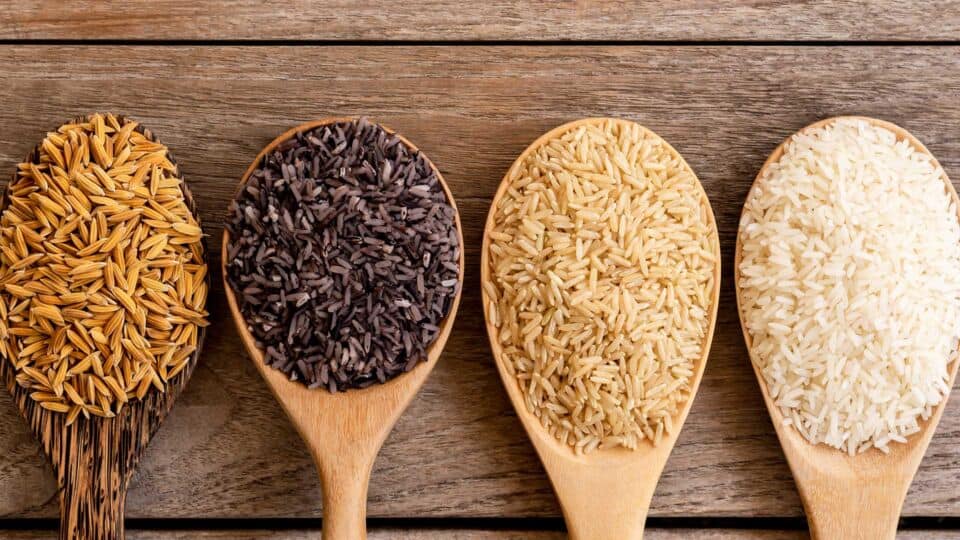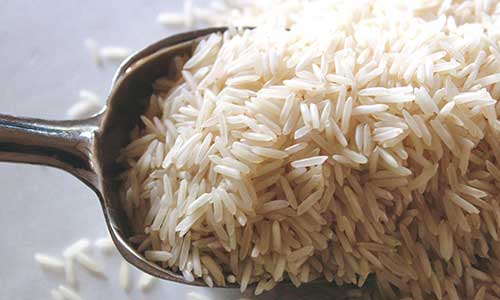The Different Colours of Rice

Rice is a staple food in over half of the world, predominantly in Asia and Africa. Due to its widespread use, many different varieties of rice have emerged. What is the difference between the different varieties of rice and what are their benefits?
White Rice
Also known as polished rice, the rice grain is the most processed in that it has its hull, bran, and germ removed. This, along with the polishing process, results in a pure white rice grain that can then be sold.
The most common varieties of white rice are the long-grained white rice, such as basmati or jasmine rice, and the short-grained varieties, known as Japanese rice or arborio rice. The long-grained varieties are typically found in Asian cooking, whereas arborio rice is a staple in Italian cooking, like in risottos. As it is polished, it is the quickest to cook of all the varieties of rice. White rice can finish cooking in about half an hour, depending on how much rice is being cooked. The only exception is basmati rice, which benefits from a half-hour-long soak before cooking.
Why Consume White Rice?
White rice lacks vitamins and minerals from the removed bran and germ compared to brown rice. With a higher glycemic index (GI), they might not be ideal for individuals with diabetes as they can cause a quicker spike in blood sugar levels.
However, there are some instances where the consumption of white rice might be favoured. People on a low-fibre diet and adults with nausea or heartburn may find white rice easier to digest, in a way that does not trigger uncomfortable symptoms.
Brown Rice
Brown rice does not have its bran and germ removed. This makes it harder than white rice, and gives it an edge over white rice when it comes to nutrient content. As it has not undergone the rigorous processing of white rice, it retains more fibre, antioxidants, vitamins, and nutrients that are present in the bran and germ. Like any other wholegrain, it also offers a lot of fibre into your diet.
Why Consume Brown Rice?
Consuming brown rice regularly can help to lower blood sugar levels and decrease the risk of type 2 diabetes. This may be due to its high glycemic index (GI). The bran of brown rice also contains powerful antioxidants, which can help neutralise harmful free radical compounds and reduce inflammation in the body. Additionally, replacing 20 per cent of white rice with brown rice can help reduce the risk of diabetes.
Germinated Brown Rice
Germinated unpolished brown rice is brown rice that germinated or sprouted. The process of allowing the grains to sprout increases the nutritional quality and also makes it easier for the body to absorb the nutrients. The germination process also makes it easier to cook and reduces cooking time compared to other varieties of brown rice. The overall texture is also softer.
Why Consume Germinated Brown Rice?
While it is packed with nutrients, it is also better in terms of flavour and texture. Compared to brown rice, germinated brown rice has 15 times more gamma aminobutyric acid (GABA), which can help protect the brain from harmful amino acids connected to Alzheimer’s disease. Brown rice also has more minerals, such as magnesium.
Red Rice
Red rice is actually a form of rice that is similar to brown rice, as it also retains its bran and germ. It gains its red hue from the oxidation of proanthocyanidins present in the bran. Red rice is packed with antioxidants and nutrients like zinc, calcium, and iron that help to keep the body healthy and strong.
Why Consume Red Rice?
Since it is low in GI, red rice helps to keep sugar levels in check, making it a go-to option for diabetics. Red rice contains proanthocyanidins, which can bolster cellular antioxidant defenses and support maintenance of healthy brain function. It also contains calcium and magnesium, which are both essential nutrients for good bone health. This variety can prevent arthritis, osteoporosis, and other bone-related diseases.
Black / Purple Rice
Black rice contains a black bran, lending it a dark appearance. The unique coloration is due to the presence of anthocyanins that gives it its distinctive appearance. It is a great source of protein, making it an excellent addition to a vegetarian diet. Protein is essential in reducing muscle loss. It helps the body build and repair muscle tissue, maintain cell growth, and keep bones strong. When cooked, black rice tends to lighten to a dark purple, which is why it is also alternatively called purple rice.
Why Consume Black / Purple Rice?
Purple rice has a similar number of calories to white or brown rice, while containing more protein, iron, and antioxidants. Higher antioxidant compounds than white rice can help to promote heart health and lower the risk of some cancers. These compounds help eliminate harmful free radicals and reduce oxidative stress.
Purple rice is also a rich source of dietary fibre that keeps the digestive system working properly, preventing constipation and other digestive problems. It contains the maximum amount of antioxidants of all the varieties of rice, making it ideal for retaining a youthful look, staving off mental decline, and in preventing chronic illnesses like certain cancers.
Eating Well, Living Well
All types of rice offer similar proteins, carbohydrates, and calories in one serving. However, they differ in the kinds of nutrients they offer.

Polished rice has less nutrients than unpolished rice, due to it having its bran and germ removed. However, some of those nutrients such as iron and B vitamins (e,g folic acid, niacin, and thiamine) may be added back in other forms to enrich it.
On the other hand, unpolished rice has a higher fibre content due to it being a wholegrain. They also typically have less calories per serving than polished rice, and the higher fibre content makes it ideal for those who are watching their diet. Even within the unpolished rice varieties, there are variations in the nutrients you can gain.
Everyone has different health needs. Understanding your body and knowing your grains can help you achieve your health goals. Ultimately, better physical health can enable you to do the things that matter to you.




